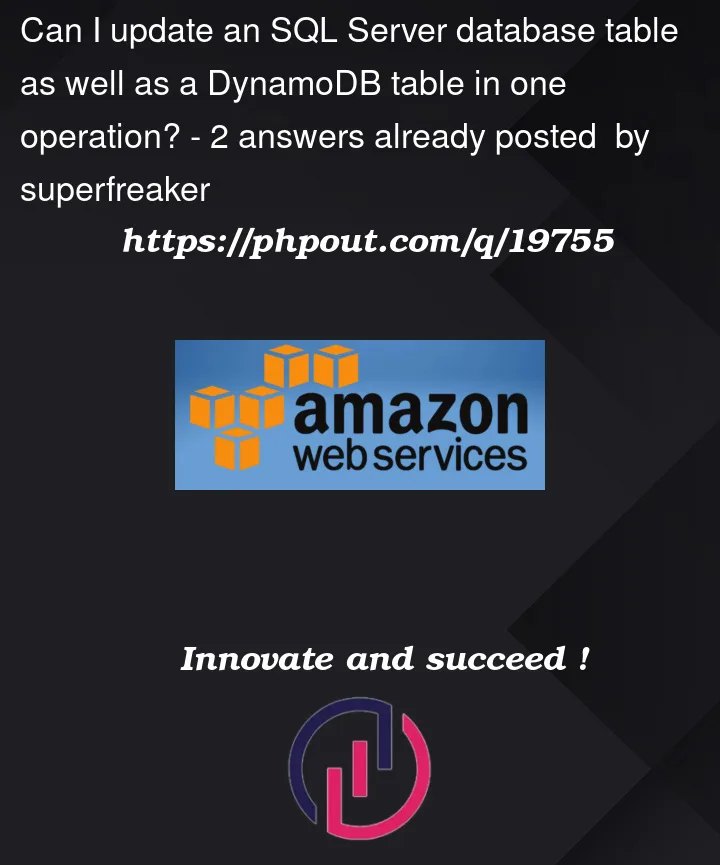We have a user facing web app powered by a SQL Server that allows users top update a table in our SQL Server that also needs to update a document record in our dynamo database table.
How could I reliably ensure that both commits have taken place? We can allow up to a few seconds in latency.




2
Answers
Short answer, you can’t.
Dynamo DB doesn’t support two-phase (aka distributed) commitment control like most (all?) relational databases do.
Long answer, given that once DDB returns a successful (2xx) response, the record is durable you might consider
Another thought, would be to take advantage of DDB streams. Have your app write just to DDB and have another application (Lambda) pick up the change and write to SQL Server.
The first option is "easier", but less robust. No guarantees that something couldn’t go wrong (app crashing) between the request to DDB and your app seeing the response. Thus rolling back the SQL while the DDB is updated.
The second option is more work, basically you’re building (buying?) a data replication engine from DDB to SQL server. But since the DDB stream data lives for 24hrs you’ve got that long to fix any problems in SQL server and pickup where you left off.
Why not just leverage the SQL transaction (because dynamo transactions are harder to work with)?
Am I missing something